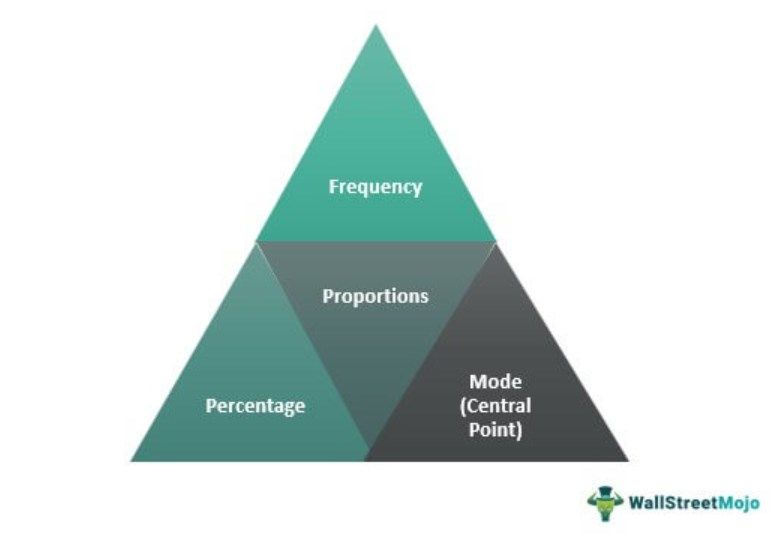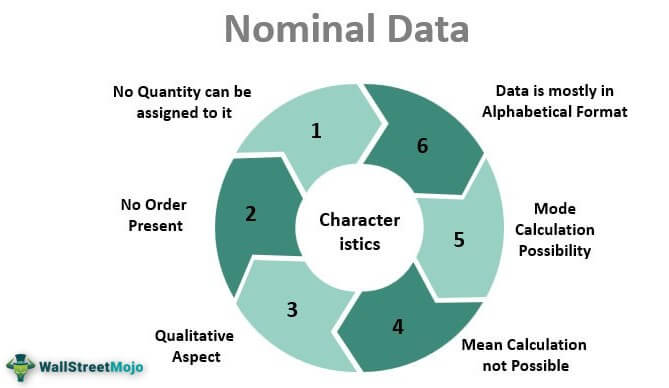Table Of Contents
Nominal Data Definition
Nominal Data is derived from a Latin word called “Nomen,” which means name and also can be termed as labelled data or named data, which is again basically the process of classifying categorical data where we cannot assign any quantitative value against the same.

Nominal data is a beneficial method used by researchers to collect their survey responses and use them in their study. It is cost-effective and not a time-consuming process. In addition, from the respondent’s point of view, it offers greater flexibility to make their choices and answer the questionnaire.
Key Takeaways
- Nominal data, derived from the Latin word "Nomen," meaning "name," refers to classified or labeled data without assigning any quantitative value.
- Researchers find nominal data valuable for gathering survey responses and incorporating them into their studies. It offers a cost-effective and efficient approach.
- Nominal data provides participants with greater flexibility in making choices and responding to questionnaires, allowing for diverse and nuanced responses. It accommodates a wide range of preferences and perspectives.
Nominal Data Explained
Nominal data or categorical data are a set of data points that are segregated based on a simple naming system. They are not distinguished by numbers unlike other types of data. They are not quantitative but are qualitative nominal data instead.
It is one of the four types of measurement, namely- Nominal, Ordinal, Interval, and Ratio. Nominal data is extremely easy and not complex to imply but also is the least in terms of precision.
Moreover, they are categorical. They do not overlap with other categories. They also are purely qualitative and provide no numerical value to the categories.
Characteristics
Let us understand the characteristics of categorical nominal data through the discussion below.
- No Quantity can be Assigned to it – We cannot assign any quantitative aspect to nominal data. It will always be in the form of nomenclature where statistical, logical, and numerical analysis is impossible, which means the researcher cannot perform any addition, subtraction, or multiplication with the data.
- No Order Present – This data has no specific order present, as when we deal with data like gender, marital status, and demography, it doesn’t matter how we look at these data.
- Qualitative Aspect – This data collected will always have this qualitative feature where the options provided for answering the questionnaires are qualitative in their attribute.
- Mean calculation not Possible – We cannot calculate the mean when we deal with nominal data. Even if the data set arrange alphabetically, calculation of mean is impossible.
- Mode Calculation Possibility – The most common answer for this data submitted from a large group of respondents is the mode. If a majority of the respondents provide any one kind of answer for a particular question, that particular answer is assumed to be the mode of the study.
- Data mostly in the Alphabetical Format – In most cases for nominal data, the data is primarily in alphabetical order and not numerical.

Example
Here, we have taken an example of 3 college students studying at a university and having their aggregate marks studied for three consecutive trimesters. Here the data collected are alphabetical or text, and we cannot assign any calculation. However, we can group the data in excel to arrive at the aggregate of the marks by finding the average of each number assigned to the unique text fields.




How to Analyze?
Since this type of data is not quantitative, calculating qualitative nominal data can be a tricky task. Let us understand how to analyze and imply them through the discussion below.
- Nominal data are generally collected using questions that respondents must answer. Questionnaires provided to the respondents include questions that can be either open-ended or multiple-choice based, where there are many options to choose from.
- Basically, there are three ways to collect the data. First, an open-ended question, second multiple-choice question, and third a part of the multiple-choice question where the respondents will choose a different category as “others.” It means the closest answer choice is not present in the list of options given. Thus, the respondent chooses “Other” and mentions the answers as an open-ended type.
- This data is then analyzed using percentage and mode, which means out of all the responses gathered for a question, the most common answer is the option the majority of the respondents have chosen. It becomes the model of the study.
- There can be more than one modal response for a specific question if there are two options or answers that share an equal percentage or choice over the others. Multiple choice questions help the researcher with the ability to create a metric variable that they can use in further studies.
- Nominal data can help the researcher create a profile of their respondents, which may not help in statistical studies but can help the researcher get a deeper understanding of their respondents.
Advantages
Let us understand the advantages of categorical nominal data through the discussion below.
- It offers the freedom to respondents to freely express their opinion.
- The research is easy to conduct when there are close-ended questions.
- One can collect a large number of answers to questions very quickly.
- It has increased reliability as it is solely dependent on the choice of answers made by the respondents.
- It is not time-consuming and can be done by anyone with minimum expertise.
- It is also cost-effective as only what is needed is a set of questions and a questionnaire.
- It offers the freedom to respondents to freely express their opinion.
- The research is easy to conduct when there are close-ended questions.
- One can collect a large number of answers to questions very quickly.
- It has increased reliability as it is solely dependent on the choice of answers made by the respondents.
- It is not time-consuming and can be done by anyone with minimum expertise.
- It is also cost-effective as only what is needed is a set of questions and a questionnaire.
Nominal Data Vs Ordinal Data
Let us understand the difference between the two types of data that are so closely linked and often misunderstood for one another.
Nominal Data
- Nominal data are items that are determined by a simple naming system. They are usually determined in qualitative terms instead of the usual quantitative terms.
- They are split in categorical form and are also called categorical data.
- They cannot be assigned or tied to any other category.
- Gender, religion, and ethnicity are a few examples of categorical nominal data.
Ordinal Data
- Ordinal data is information that is sorted in sequential order. However, they cannot be automatically tied or differentiated, they only show a sequence.
- They are neither quantitative nor categorical. They are placed somewhere in the middle.
- Numbers can be assigned to ordinal data but nothing can be done in terms of arithmetics.
- Education level, customer ratings, and economic status are a few examples of ordinal data.
